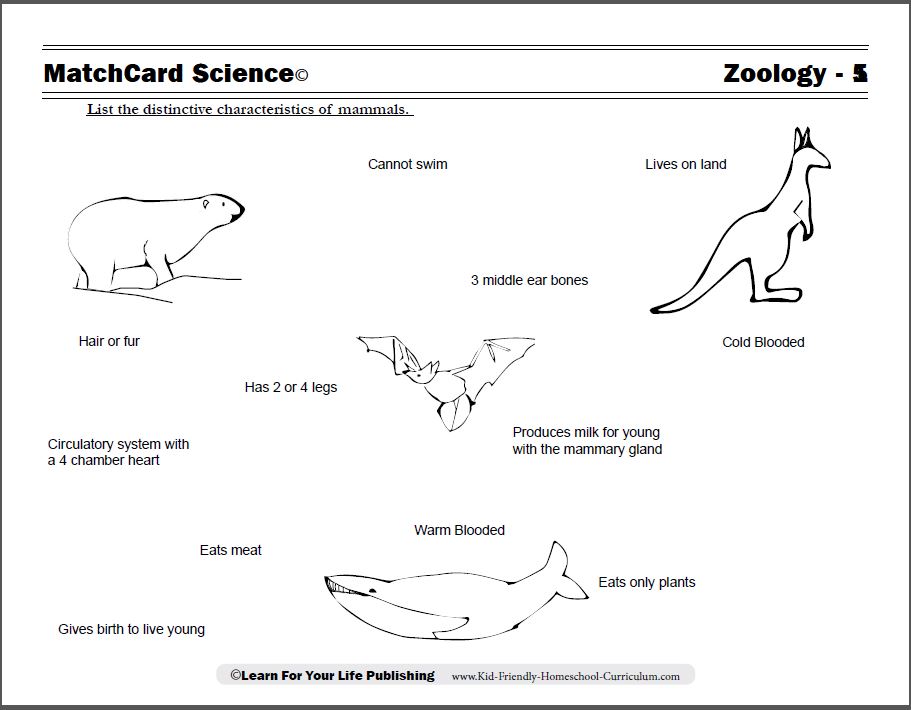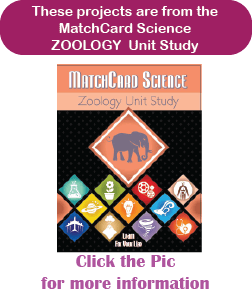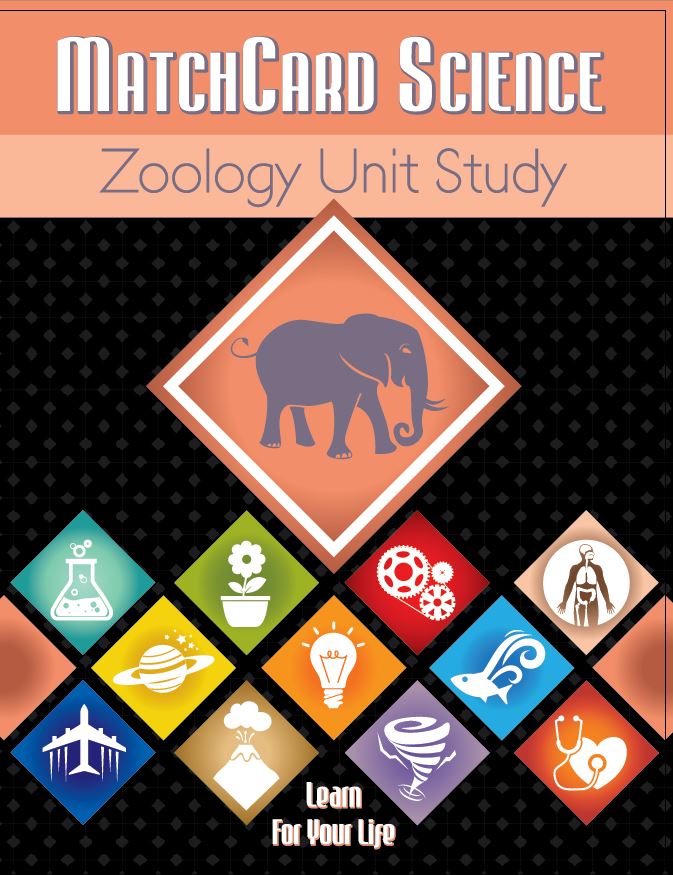Mammal Facts
Use our mammal lesson plans to teach the six unique characteristics of mammals.
Free Download Below


MatchCard Science Mammal Facts Worksheet
Objective: List the distinctive characteristics of mammals.MatchCard: Download below.
The MatchCard lists twelve facts (six true and six false) about mammals. Students have to mark YES of NO to each of the mammal facts.
Download and Use the Mammal Facts MatchCard


This is MatchCard #5 of the Zoology Unit Study. Find more information on MatchCard Science below.
Mammal Lesson Plans
What Is A Mammal

Mammals A to Z
Here is another fun activity to get them to wrack their brains for all the mammal species they can think of.Have them come up with an Alphabet List of animals - one for each letter of the alphabet.
This can be a collaborative group effort or a competitive event if you have more than one student working on this unit study.
Tip: If you don't want it to take days - you can give them a PASS to skip six letters of their choice.
Mammal MatchCard
Use the MatchCard to teach the characteristics of mammals. The MatchCard is re-usuable and can be used for review. Download the MatchCard and get more information on using MatchCards below.Mammal Charades
Each student can pick one unique mammal. Encourage them to go for the less common mammals like a platypus or aardvark instead of dog or cat.Play animal charades and see if others can guess their animal.
>Report It
Animals make great topics for writing assignments. They provide a concrete as well as interesting topic as students master new writing skills.Students can be assigned a written report of their unique mammal. Their report should include information about each of the characteristics of mammals (live young, fur covered) as well as information about what makes this animal unique from other mammals.
Mammal's Milk
See below for some activities that can be done with milk - that unique substance made only by mammals.Definition of Mammal
What Is A Mammal
A mammal is a class of creatures from the animal kingdom and vertabrae phylum (they have backbones.) They are warm-blooded animals covered with fur who give birth to live offspring and sustain them with milk secretion.That IS the definition of mammal. So, along comes the platypus and the echidnas - the only known egg-laying mammals. The classification system was developed long before all the plants and animals in the world had been discovered; and this is a good example of how everything doesn't fit as nice and neat into the classification system as intended.
Oh well. It's still the definition. See the other mammal facts below.
Characteristics of Mammals
So here are the six distinct features of mammals:- Warm blooded - they live in almost all climates on the planet because they maintain their own body heat
- Covered with hair or fur. That helps with the heat regulation.
- Give birth to live young. No hatching, or scratching. The little ones are born.
- Secrete milk from the mammary gland for their off-spring. (Hence, the name mammal)
- Blood circulates in a circulatory system pumped by a four chamber heart.
- They have three small bones in the middle ear.
Milk Activities

Milk Curds
The Case of the Curdling Curds You will need:
- 1/4 cup of milk
- 1 teaspoon vinegar
Put the curds in a small cup with the teaspoon of vinegar. Mix and leave for 30 to 45 minutes.
When you return, you will find a rubbery substance like clay. This is made from the protein in milk that was separated from the water.
Calcium and Bones
This activities shows the need for the calcium we get in milk.- Two chicken bones - approximately the same size
- one cup of vinegar
- one cup of water
Next day, you will see that the vinegar has taken the calcium out of the bones. Let them feel how soft and rubbery the bone is. How well could you walk if you bones were that soft?
A little encouragement for daily calcium!
Paint with Milk
Younger sibs in the family might like to paint with milk, while their older siblings are doing other milk projects. You can add a significant amount of food color to milk and use it as a paint.The Case for Casein
Casein in the protein in milk that makes it thick and coagulate. Cook some pudding, and you will often see the layer of casein on the top.Compare the different amounts of casein in the milk of different mammals. This demonstrates one of the reason breastfed babies usually have less digestive problems than babies fed with another species milk.
MatchCard Science
How To Use MatchCards

Download the FREE MatchCard Science Instructor's Guide and see how MatchCards can make building their science knowledge base fun.
12 Science Unit Studies

Chemistry is only one of twelve complete unit studies for kids in 3rd to 8th grade.
Comprehensive objectives, hands-on projects, suggested science fair experiments, and the fun game-like MatchCards keep them interested in learning science. See all twelve MatchCard Science Unit Studies.
About Our Site
Hands-On Learning














